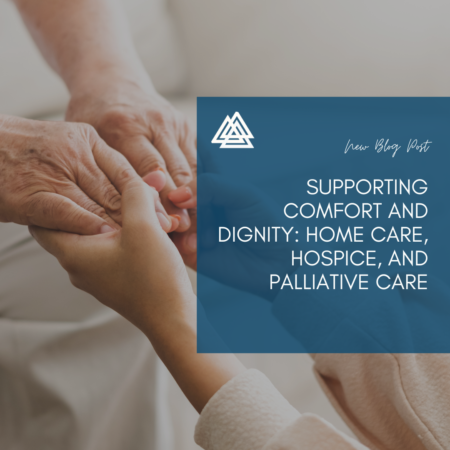 For many individuals facing health challenges, the option to receive care at home can be a source of immense comfort. Whether it’s managing a chronic condition, receiving palliative support, or transitioning to hospice care, the familiarity of home offers a sense of stability and peace during uncertain times. Home care, hospice, and palliative care all share a common goal: to provide high-quality, compassionate care tailored to meet the unique needs of patients, while allowing them to remain in a setting that is familiar and comforting.
For many individuals facing health challenges, the option to receive care at home can be a source of immense comfort. Whether it’s managing a chronic condition, receiving palliative support, or transitioning to hospice care, the familiarity of home offers a sense of stability and peace during uncertain times. Home care, hospice, and palliative care all share a common goal: to provide high-quality, compassionate care tailored to meet the unique needs of patients, while allowing them to remain in a setting that is familiar and comforting.
Understanding Home Care
Home care is a broad term that encompasses a range of medical and non-medical services designed to support patients in the comfort of their own homes. This type of care is ideal for individuals who may be recovering from an illness or surgery, managing a chronic condition, or need assistance with activities of daily living (ADLs) such as bathing, dressing, and meal preparation.
Services can include:
- Skilled nursing care for medical management and monitoring.
- Physical therapy, occupational therapy, and speech therapy.
- Personal care, such as help with grooming and mobility.
- Companion care to combat loneliness and support mental well-being.
Home care is particularly beneficial for older adults or those with mobility challenges who want to maintain their independence while receiving the care they need.
Exploring Hospice Care
Hospice care is designed for patients who have been diagnosed with a terminal illness and have a life expectancy of six months or less. The goal of hospice is not to cure the illness, but to ensure the highest possible quality of life for the patient and provide support for their families. By focusing on symptom management, pain relief, and emotional and spiritual support, hospice care enables patients to live their remaining days with dignity and peace.
Key components of hospice care include:
- Pain and symptom management to ensure comfort.
- Emotional and psychological support for both patients and families.
- Assistance with daily tasks as needed.
- Spiritual care and counseling services.
Hospice care can be provided in a variety of settings, including a patient’s home, a nursing facility, or a dedicated hospice center. For many, choosing to receive hospice services at home allows them to spend meaningful time in a cherished environment surrounded by loved ones.
The Role of Palliative Care
Palliative care is a specialized form of medical care focused on providing relief from the symptoms and stress of a serious illness, regardless of the stage or prognosis. The aim is to improve quality of life for both the patient and their family by addressing physical, emotional, and social needs. Palliative care can be provided alongside curative treatments, making it a versatile option for individuals facing a serious diagnosis.
Palliative care may involve:
- Managing symptoms such as pain, nausea, fatigue, or difficulty breathing.
- Coordinating care among different healthcare providers.
- Offering psychological and social support for patients and families.
- Helping patients make informed decisions about their treatment options.
Like hospice, palliative care can be delivered in a home setting, which enables patients to receive comprehensive care without having to leave their residence.
Why Staying at Home Matters
For many patients, the choice to receive home care, hospice, or palliative services in their own residence is about more than convenience; it’s about maintaining a sense of identity, autonomy, and comfort. The home environment allows for personal routines to continue, cherished pets to stay nearby, and family members to be more actively involved in day-to-day care. Research has shown that patients who receive care at home often report higher levels of satisfaction, lower stress, and an enhanced sense of well-being.
Additionally, home-based care can reduce the risk of hospital-acquired infections and unnecessary emergency room visits, promoting better health outcomes and a more personalized approach to care. For families, having their loved one at home makes it easier to stay connected and involved in their care, fostering a sense of closeness and shared decision-making.
Supporting Patients and Families at Home
Choosing home care, hospice, or palliative care can be a deeply personal decision, influenced by the patient’s preferences, the nature of their condition, and the support system available. Healthcare providers play a crucial role in guiding families through these options, ensuring that each patient receives the compassionate, dignified care they deserve.
For those considering this path, it’s essential to work with a reputable care provider who understands the complexities of home-based care and is equipped to deliver comprehensive, individualized support. With the right resources, patients and their families can experience the benefits of staying at home while receiving the care they need—supporting comfort, quality of life, and peace of mind during every stage of the journey.
By focusing on the whole person and embracing the healing power of home, home care, hospice, and palliative services offer a meaningful way to support patients and families through some of life’s most challenging moments.
